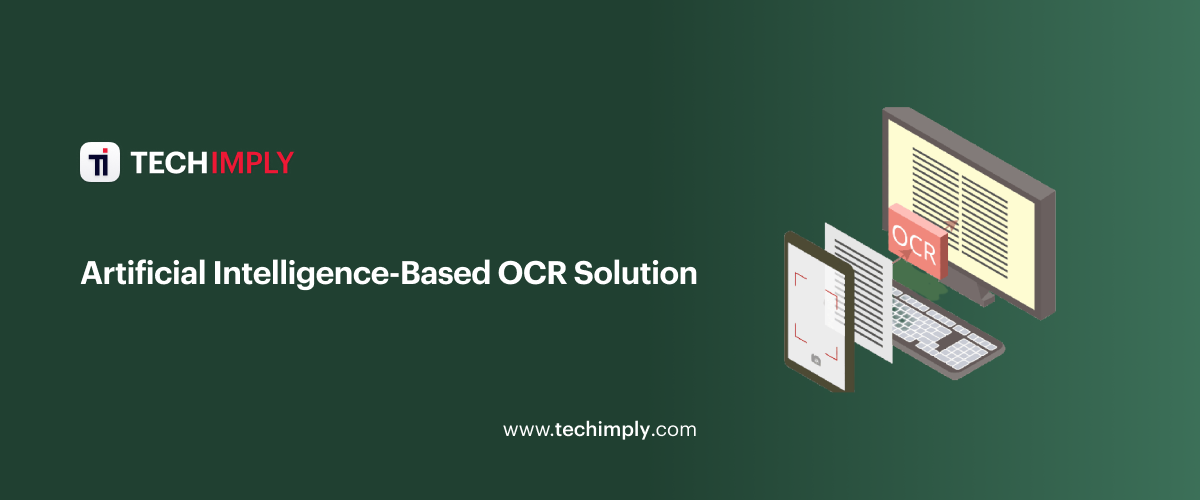Describe OCR.
OCR, or optical character recognition, is a method that allows us to analyze photographs that include text, extract the text from them, and convert it into a machine-readable format. This means that a person can use OCR technology to extract important data from images of things like shipping container numbers, license plates, and receipts and then store the information in a way that a computer can read, update, and use later.
How does it work?
The older OCR methods used computer vision methods like thresholding and contour detection to distinguish the characters from the backdrop. As technology advanced, so did the methods for overcoming the character recognition problem. OCR technology now makes use of deep neural networks to find and automatically recognize text that is present in an image. These neural networks need to be trained on images and their ground truth values in order to be used on unseen data with high accuracy.
Is it safe to use online OCR services?
OCR technology can be used by businesses and individuals for a variety of jobs to process a lot of data. Because there are numerous varied types of data and various business requirements, the accuracy of OCR algorithms can make or break your apps. Therefore, it's essential to choose an OCR provider who can do it fast and with great accuracy. The Nanonets OCR API, which provides excellent machine learning models that have been highly accurate after being trained on a variety of data, makes this possible. Nanonets also provide the choice of deploying models on-premise or in the cloud using docker images, depending on a variety of parameters like the sensitivity of the data the organization is dealing with.
A business must submit Social Security numbers, copies of photo IDs, and passports for every one of its employees, board members, and shareholders when opening a new account. Using digital images of actual documents, including scanned paper documents, OCR (Optical Character Recognition) technology can recognize printed or handwritten text characters. The procedure of the OCR solution comprises reading the written text of a document and translating the characters into machine language that is applied to data processing. Occasionally it refers to text and image recognition with the help of AI.
Best Optical Character Recognition software used to convert manual documents into text into machine learning to save information for long-term use. While software often handles advanced processing, the text is duplicated or read using specific circuit boards, optical scanners, or other devices. More advanced intelligent character recognition (ICR) approaches, such as recognizing languages or handwriting styles, can be implemented by software using Artificial Intelligence (AI).
The most popular application for OCR solutions is to transform paper-based legal or archival documents into PDFs. Once the document is saved as a soft copy, users can edit, format, and search it as if writing using a word processor.
Process of AI-Based Optical Character Recognition Working
OCR software can employ artificial intelligence software (AI) to develop more complex intelligent character recognition (ICR) methods, such as handwriting or language recognition. OCR applications transform paper-based legal or historical documents into pdf files structured, searched, and updated just like papers produced using a word processor.
Optical character readers solution processes a document's physical structure using a scanner. After all, pages duplicate, an AI-based OCsR solution converts them into a single document.
In the scanned-in image bright areas distinguish from dark ones; the light areas are labeled as background, and the dark ones are characters that need to be recognized. After analyzing the black areas, letters or numbers are discovered. At this stage, you usually focus on one word, one character, or one section of text at a time. The characters are then recognized using either a pattern recognition algorithm or a feature recognition algorithm.
Pattern recognition is used to compare and identify characters in the scanned image file or document. It divides the page into sections with text blocks, tables, and graphics in each segment. To create lines and characters, words are first separated from lines. AI-based OCR providers recognize each character before comparing them to a set of pattern images. The software displays the recognized text to you once it has checked for all possible matches.
Optical Character Recognition Benefits with AI-Based Solutions
The main benefit of optical character recognition (OCR) technology is that it facilitates data entry by facilitating text searches, editing, and storing. OCR enables businesses, individuals, and other entities to store documents on their computers, laptops, and other devices, ensuring continued access to all paperwork. The use of OCR technology has the following benefits:
- Reduce timing with an automated solution
- Boost workflows with AI features
- Automate content processing
- Data safety and centralized storage
- Most accurate information
What Role does Artificial Intelligence Play in eKYC OCR?
Using optical character recognition, data may be automatically extracted from all kinds of papers with text (OCR). In order to replace the manual process of reading & validating papers, frequently done by clerks, OCR benefits. Any document containing details about a potential consumer may be processed using the OCR API. It makes the text extractable and instantly recognizes the text it needs.
The returned data worked as required, for instance by sending it to any suitable system, database, or tool for further processing. This automated recognition is supported by artificial intelligence (AI), which has been thoroughly and specially trained on specific types of documents.
Final Thoughts
Proof of identity and residency are frequently needed for the eKYC procedure. In essence, this means that the AI must be able to recognize a name, a photo, an address, and in some circumstances, personal numbers, contact information, or even bank account numbers in order to acquire the necessary data for these forms of proof. It is clear how OCR readers and AI interact: OCR reads the text, AI recognizes the context, and pulls the pertinent data. Data extraction and transformed into a particular data format, like JSON, in order to connect with an existing database. The process of verifying the identity or an address is greatly streamlined by this.



 Providers for Small Business.jpg)


